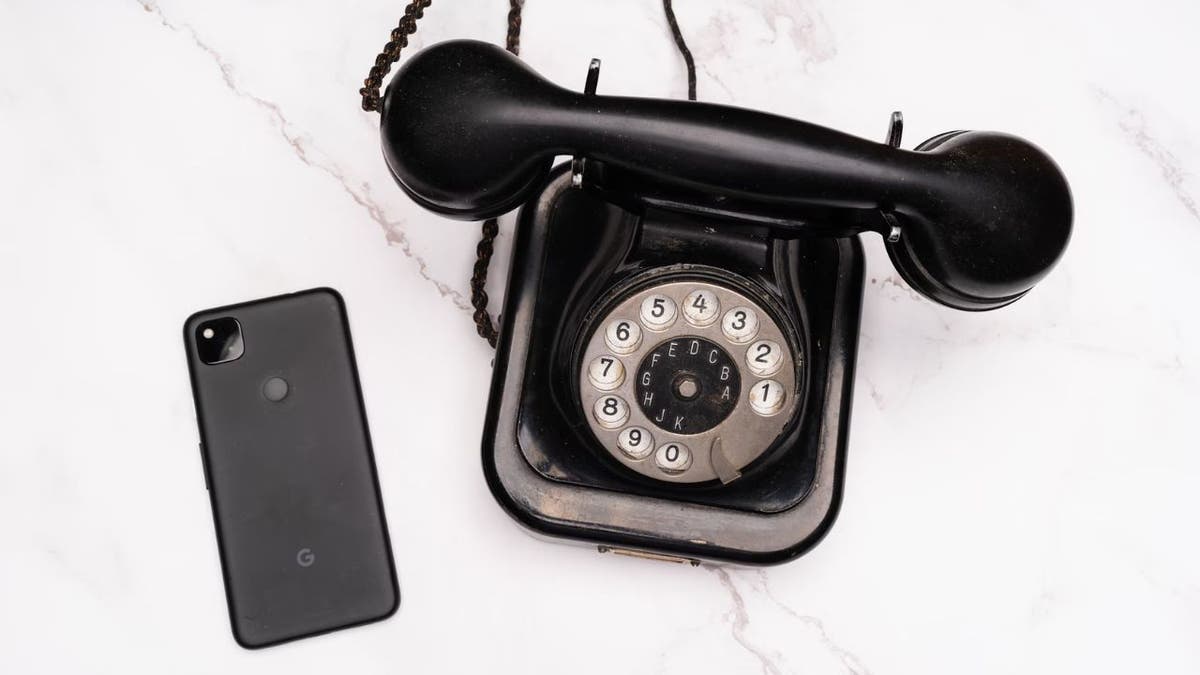In recent weeks, airport Customs and Border Protection (CBP) agents have drawn public outcry for denying travelers US entry based on searches of their phones. A doctor on an H-1B visa was deported to Lebanon after CBP found “sympathetic photos and videos” of Hezbollah leaders. A French scientist was turned away after a device search unearthed messages criticizing the Trump administration’s cuts to research programs, which officers said “conveyed hatred of Trump” and “could be qualified as terrorism.” As the administration ratchets up pressure to turn away even legal immigrants, its justifications are becoming thinner and thinner — but travelers can still benefit from knowing what are supposed to be their legal rights.
Technology
Is it safe to travel with your phone right now?

Your ability to decline a search depends on your immigration status — and, in some cases, on where and how you’re entering the country. Courts across the country have issued different rulings on device searches at ports of entry. But no matter your situation, there are precautions you can take to safeguard your digital privacy.
CBP device searches have historically been relatively rare. During the 2024 fiscal year, less than 0.01 percent of arriving international travelers had their phones, computers, or other electronic devices searched by CBP, according to the agency. That year, CBP officers conducted 47,047 device searches. But even before this recent wave of incidents, inspections were on the rise: eight years earlier, during the 2016 fiscal year, CBP searched only 19,051 devices.
The “border search” exception
The Supreme Court ruled in 2014 that warrantless searches of people’s cell phones violated the Fourth Amendment. But there’s one exception to that rule: searches that happen at the border. The courts have held that border searches “are reasonable simply because they occur at the border,” meaning in most cases, CBP and Border Patrol don’t need a warrant to look through travelers’ belongings — including their phones. That exception applies far beyond the US’s literal borders, since airports are considered border zones, too.
“Traditionally, the border search exception to the Fourth Amendment allowed customs officers to search things like luggage. The idea was whatever you’re taking with you is pertinent to your travel,” Saira Hussain, a senior staff attorney at the Electronic Frontier Foundation, told The Verge. The point was to look for people or things that were inadmissible into the country.
“It can show every facet of your life.”
These days, most travelers are carrying a lot more in their pockets — not only information stored on a phone’s hardware, but anything that’s accessible on it with a data connection. “When you look at devices, the data that you carry with you isn’t just pertinent to your travel. This data can precede your travel by over a decade because of how much information is stored on the cloud,” Hussain said. “It can show every facet of your life. It can show your financial history, your medical history, your communications with your doctor and your attorney. It can reveal so much information that is not analogous at all to the notion of a customs officer looking through your luggage.” Privacy advocates have warned of this issue for years, but in an environment where officers are seeking any pretext to turn someone away, it’s an even bigger problem.
If you’re a US citizen, “you have the right to say no” to a search, “and they are not allowed to bar you from the country,” Hussain said. But if you refuse, CBP can still take your phone, laptop, or other devices and hold onto them.
Permanent residents can similarly refuse a search, but with complicating factors. If someone with a green card leaves the US for more than 180 days, they’re screened for “inadmissibility” — reasons they may be barred from entry — upon returning to the country. Green card holders who have certain offenses on their record may also be deemed inadmissible. That appears to have been the case with Fabian Schmidt, a permanent resident whose family said he was “violently interrogated” by CBP agents at Boston Logan Airport after returning from a trip to Europe. Because of these factors, permanent residents may not feel comfortable refusing a search, even if doing so wouldn’t bar them from entering the country.
Visa holders have fewer rights at ports of entry, and refusing a search could lead to them being denied entry to the country.
There are two types of device searches CBP officers can conduct: basic and forensic, or advanced. “There’s a distinction that the government draws between searching your phone and just looking at whatever is on it, versus connecting your phone to external equipment to search it using advanced algorithms or to copy the contents of your phone,” Hussain said.
The government maintains that it doesn’t need a warrant to conduct “basic” searches of the contents of a person’s phone. During these searches, Hussain explained, agents are supposed to put your phone on airplane mode and can only look at what is accessible offline — but that can still be a lot of information, including any cloud data that’s currently synced.
“While forensic inspections are powerful, a lot of mischief can happen through the physical, ‘thumbing-through’ inspections that law enforcement can engage in,” Tom McBrien, counsel at the Electronic Privacy Information Center, also told The Verge.
“A lot of mischief can happen through the physical, ‘thumbing-through’ inspections that law enforcement can engage in”
For the most part, courts have avoided the question of whether CBP can conduct warrantless basic searches of a person’s phone or laptop, effectively allowing the agency to do so. But there’s one geographic exception to this rule. Last year, a federal judge in New York’s Eastern District ruled that CBP can’t conduct any warrantless searches of travelers’ devices. That ruling doesn’t apply anywhere else in the country, but the district includes John F. Kennedy Airport in Queens — the sixth-busiest airport in the US. That ruling applies to both basic and forensic inspections.
Elsewhere in the country, judges have imposed some limitations on advanced searches. Warrantless forensic searches are allowed in some places and prohibited in others, depending on how different federal circuit courts rule. The Supreme Court could clear this up with a ruling that applies nationwide, but it’s avoided the question for years.
“Your rights will be different depending on whether you’re on a flight landing in Boston Logan in the First Circuit or Reagan/Dulles in the Fourth Circuit,” McBrien said. “Similarly, your rights would be different if you’re crossing the border in Arizona (Ninth Circuit) or New Mexico (Tenth Circuit). This does not make a lot of sense, but the Supreme Court has consistently declined to address these disparities by consistently denying petitions for certiorari in cases that have teed the question up.”
Some courts have been more permissive than others. The Ninth Circuit — which includes Alaska, Arizona, California, Hawaii, Idaho, Montana, Nevada, Oregon, and Washington — prohibits warrantless forensic searches unless officers are looking for “digital contraband,” such as child sexual abuse material. The Fourth Circuit — covering Maryland, North Carolina, South Carolina, Virginia, and West Virginia — prohibits warrantless forensic searches unless officers are looking for information related to ongoing border violations, such as human smuggling or drug trafficking.
In 2023, a federal judge in the Southern District of New York ruled that the border search exception doesn’t extend to forensic searches, for which warrants are needed. (Oddly, the case in question involved a phone search at Newark Liberty Airport in New Jersey, a state that is in a different federal circuit from New York.) These searches, judge Jed Rakoff wrote, “extend the Government’s reach far beyond the person and luggage of the border-crosser — as if the fact of a border crossing somehow entitled the Government to search that traveler’s home, car, and office.”
Malik’s phone was taken even though he’s enrolled in Global Entry
Not all judges agree. In 2021, Adam Malik, an immigration lawyer, sued CBP after agents at Dallas Fort Worth International Airport seized his phone and searched the contents without a warrant. According to the lawsuit, Malik’s phone was taken even though he’s enrolled in Global Entry, CBP’s trusted traveler program. Because the agents couldn’t bypass Malik’s password, they sent the phone to a forensics lab, which extracted all the phone’s data.
A federal court ruled in favor of DHS, saying the warrantless search hadn’t violated Malik’s rights. When Malik appealed to the Fifth Circuit — which covers Louisiana, Mississippi, and Texas — the judges held that the search didn’t require a warrant. But the court also expressed “no view on how the border-search exemption may develop or be clarified in future cases.”
In other words, the constitutionality of these searches is still an open question — and CBP won’t stop conducting them until and unless it’s expressly forbidden from doing so.
These distinctions matter because they determine a person’s basis for challenging device inspections in court. But given the Trump administration’s recent track record of ignoring the law and flouting judicial orders, limiting what can be found on your phone is a safer bet than suing the government over an unlawful search after the fact.
Instead of trying to game out what rights you have depending on your immigration status and what airport you’re flying into (or what land border you’re crossing), the best way to keep your devices safe from CBP is to limit what’s on them.
“We always encourage data minimization when crossing the border; you want to travel with the least amount of data possible,” Hussain said.
Before traveling, you should encrypt your devices and make sure you’re using secure passwords. Travelers should disable biometric logins like Face ID, since some courts have ruled that police can’t compel you to tell them your password but they can use biometrics to unlock your phone.
Travelers should disable biometric logins like Face ID
The EFF recommends that travelers limit what can be found during basic phone or laptop searches by uploading their data onto the cloud and deleting it off their device — and ensuring that it’s fully been removed, since agents can also look through your phone’s “recently deleted” files during basic searches. Customs agents are supposed to keep your phone on airplane mode while they conduct a basic search, but that still lets them see any cached emails, text messages, and other communications. The best way to safeguard this information is to back it up onto the cloud and then wipe your phone or laptop entirely.
Backing up sensitive or personal data doesn’t just prevent others from accessing your device; it also ensures you don’t lose that data if CBP seizes your phone or computer. McBrien also suggests that people turn their phones off when they’re crossing the border or at the airport. “Turning the phone off means that when you turn it back on, it requires a passcode whether or not you use FaceID or other biometric measures,” McBrien said.
In a better legal environment, these precautions wouldn’t be the only meaningful shield between you and a border search. “Without strong constitutional and statutory protections, personal choices about how to configure one’s device and apps can only mitigate — not eliminate — the dangers that border device searches pose to their privacy and speech rights,” McBrien said. For now, if CBP really wants to look through your phone, they’ll likely find a way. But you can still protect yourself as much as possible.

Technology
Stranger Things 5’s first trailer promises an epic showdown

It’s been a long time coming, but we finally have a real look at the end of Stranger Things. Netflix just released the first teaser trailer for the show’s fifth season, which will also be its last when it starts streaming later this year. As was alluded to in the finale of season 4, the new trailer — which, despite being called a teaser, clocks in at nearly three minutes long — is focused on the major showdown with Vecna that will presumably end the string of supernatural bad luck in Hawkins, Indiana for good.
Here’s the official setup for the finale, according to Netflix:
The fall of 1987. Hawkins is scarred by the opening of the Rifts, and our heroes are united by a single goal: find and kill Vecna. But he has vanished — his whereabouts and plans unknown. Complicating their mission, the government has placed the town under military quarantine and intensified its hunt for Eleven, forcing her back into hiding. As the anniversary of Will’s disappearance approaches, so does a heavy, familiar dread. The final battle is looming — and with it, a darkness more powerful and more deadly than anything they’ve faced before. To end this nightmare, they’ll need everyone — the full party — standing together, one last time.
Technology
Landline identity theft leads to major bank fraud

NEWYou can now listen to Fox News articles!
Landline identity theft is an emerging threat that gives scammers backdoor access to your accounts.
An outdated phone number, especially a forgotten landline, can help them bypass security and drain your savings.
Here’s how it happens and how to stop it.
Sign up for my FREE CyberGuy Report
Get my best tech tips, urgent security alerts, and exclusive deals delivered straight to your inbox. Plus, you’ll get instant access to my Ultimate Scam Survival Guide – free when you join my CYBERGUY.COM/NEWSLETTER.
IS YOUR PHONE HACKED? HOW TO TELL AND WHAT TO DO
A man on a phone call using a landline telephone (Kurt “CyberGuy” Knutsson)
How forgotten landline identity theft drained a bank account
Richard from Reno, Nevada, shared a troubling story. His friend lost money to scammers because their old landline number was still linked to a bank account.
It started with a credit alert asking whether the friend had opened a new card. They said no and thought the issue was resolved.
But soon after, they couldn’t access their bank or investment accounts. Despite having transaction alerts enabled, the money was already gone.
WHAT IS ARTIFICIAL INTELLIGENCE (AI)?
The scammer didn’t hack a password. Instead, they used a security loophole, an outdated landline still listed on file.
“My friend had an old but active landline linked to their bank account,” Richard said. “The thief convinced the phone company to port the number to a mobile device. Then they used it to intercept security codes and drain the account.”
The scammer requested a password reset. The bank sent a verification code to the old number, now controlled by the scammer. That code let them change the login, lock the victim out, and move the funds.
Credit monitoring caught the new credit inquiry but failed to detect the fraud inside the existing accounts. By the time access was restored, the money had disappeared.

A man screaming into a phone receiver of a landline phone (Kurt “CyberGuy” Knutsson)
Why landline identity theft is so easy to pull off
This scam highlights how identity thieves evolve. They don’t always need advanced tools. Sometimes, they just use the details you’ve forgotten.
The role of number porting
The attacker used number porting, a process meant to help people keep their number when switching carriers. It’s legitimate, until scammers exploit it.
In this case, the thief pretended to be the victim and asked the phone company to transfer the landline number to a mobile device. Once the number was active, they received calls and texts, including two-factor authentication (2FA) codes.
How old contact info creates new risks
Many people forget to update recovery settings after creating an account. But an outdated phone number or email can still receive security codes. If a scammer gains control of those recovery tools, your accounts are wide open.
The overlooked weaknesses that made this attack work
Even small gaps in your security settings can lead to big problems. These were the key vulnerabilities in this case:
Old phone numbers stay linked too long
Scammers can hijack even inactive numbers through porting. If those numbers still connect to your bank or email, they become an easy target.
Credit monitoring can miss real-time fraud
Tools that monitor new credit accounts won’t always detect unauthorized transactions in your existing bank or investment accounts.
Weak 2FA setups can be hijacked
2FA is helpful, but only when the linked phone number or email is secure. If a scammer controls that method, they can bypass your protections.

An older style landline telephone next to smartphone (Kurt “CyberGuy” Knutsson)
How to prevent landline identity theft
You can’t stop scammers from trying, but you can make it much harder for them to succeed. Use these steps to reduce your risk.
1. Audit your account recovery options: Check your recovery settings on every important account. Delete old phone numbers or backup emails. Keep only active, secure options on file.
2. Use an authenticator app: Authenticator apps like Google Authenticator, Authy, or Microsoft Authenticator generate one-time login codes on your device. This is safer than relying on text messages, which scammers can intercept.
3. Freeze number porting with your carrier: Contact your phone provider and ask about port-out protection. This feature blocks scammers from transferring your number without extra identity verification like a PIN or in-person request.
4. Remove your info from data broker sites: Scammers gather personal details like old numbers from public broker listings. Use a data removal service to erase this info from the web. Check out my top picks for data removal services and get a free scan to find out if your personal information is already out on the web by visiting Cyberguy.com/Delete.
Get a free scan to find out if your personal information is already out on the web: Cyberguy.com/FreeScan.
5. Monitor your bank activity directly: Set up alerts through your bank for every transaction. Log in regularly, even if you haven’t received any warnings, to catch fraud faster.
6. Use a password manager: A strong, unique password protects each account. A tool like a password manager creates and stores complex passwords for you. It also tracks password health and alerts you to possible breaches. Get more details about my best expert-reviewed Password Managers of 2025 at Cyberguy.com/Passwords.
7. Consider full identity theft protection: Even with strong passwords and 2FA, your personal info can still be exposed. An identity theft protection service offers dark web monitoring, account alerts, and some offer up to $1 million in identity theft insurance. See my tips and best picks on how to protect yourself from identity theft at Cyberguy.com/IdentityTheft.
Kurt’s key takeaways
Landline identity theft shows that forgotten account settings can turn into serious threats. Take a few minutes to review your recovery options. Switch to authenticator apps. Set up port-out protection. And don’t rely on credit monitoring alone, it can’t catch everything. These simple steps can help you stay ahead of evolving scams and protect your most important accounts.
Have you experienced a similar scam or spotted a new tactic? Let us know by writing us at Cyberguy.com/Contact.
Sign up for my FREE CyberGuy Report
Get my best tech tips, urgent security alerts, and exclusive deals delivered straight to your inbox. Plus, you’ll get instant access to my Ultimate Scam Survival Guide – free when you join my CYBERGUY.COM/NEWSLETTER.
Copyright 2025 CyberGuy.com. All rights reserved.
Technology
Analogue’s 4K N64 has been delayed again, but only by a month

The Analogue 3D has been hit with another delay, but should still be launching this summer. In an update on its preorder website, Analogue explained that it’s modern take on the Nintendo 64 “is now shipping in late August 2025,” after previously aiming for July. The company said in a separate statement that the decision was made due to the ever-changing situation around US tariffs.
“Following last week’s sudden tariff changes, Analogue 3D will now begin shipping next month,” the company explained in a post on X. “We’re absorbing the costs — your preorder price stays the same. No additional charges. Late August, the wait ends: reviews go live with everything we’ve been saving for this moment.”
Like its previous hardware, the $249.99 Analogue 3D is a modern console designed to play old games, in this case N64 cartridges. The new console can upscale classic games to 4K and includes multiple display modes to mimic the look and feel of a CRT display, and the company says that it supports 100 percent of N64 cartridges. It was originally planned for a launch in 2024, but has been hit with multiple delays since it was initially announced.
-

 Culture1 week ago
Culture1 week agoTry to Match These Snarky Quotations to Their Novels and Stories
-

 News7 days ago
News7 days agoVideo: Trump Compliments President of Liberia on His ‘Beautiful English’
-
Finance1 week ago
Do you really save money on Prime Day?
-

 Technology1 week ago
Technology1 week agoApple’s latest AirPods are already on sale for $99 before Prime Day
-

 News1 week ago
News1 week agoTexas Flooding Map: See How the Floodwaters Rose Along the Guadalupe River
-
Business1 week ago
Companies keep slashing jobs. How worried should workers be about AI replacing them?
-

 News6 days ago
News6 days agoVideo: Clashes After Immigration Raid at California Cannabis Farm
-

 Politics1 week ago
Politics1 week agoJournalist who refused to duck during Trump assassination attempt reflects on Butler rally in new book




















